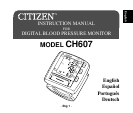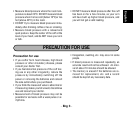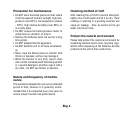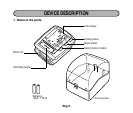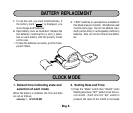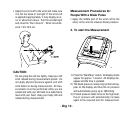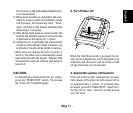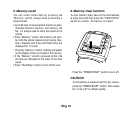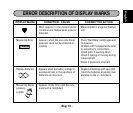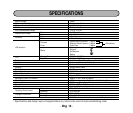
General remarks on blood pres-
sure and blood pressure measure-
ment
• If the cuff is to be deflated quickly, depress “Start/
Stop” switch.
• The attached cuff is suited for a wrist circum-
ference of 13.5 cm to 19.5 cm.
• When attaching the cuff, the body of the blood
pressure monitor should be placed on the in-
side of your wrist.
• Self-measurement is no therapy! In no case
should the dosage of medication ordered by the
doctor be changed.
• In preparation for blood pressure measure-
ment, you should urinate and should remain
relatively still for 10 to 15 minutes prior to mea-
surement.
• Exercise, eating and drinking, smoking, etc.,
prior to measurement may affect the results.
• The blood pressure varies constantly through-
out the day. Measurement should be made
regularly at the same time each day.
• Do not be too impressed by the results of one
measurement. Keep a record of blood pressure
variations. Many readings tell a story.
• Emotional stress may tend to cause blood pres-
sure to rise.
• This product should not be used to monitor
cardiac arrhythmia.
For proper measurement of blood
pressure
• Take a deep breath five or six times and then
relax before measuring blood pressure. If you
are tense when taking the measurement, you
will not get a valid reading
• Blood pressure will be elevated when you are
in a worrisome or irritated state, suffering from
lack of sleep or constipation, or after exercise
or a meal.
• Putting on the cuff is one of the most impor-
tant tasks for ensuring proper measurement of
blood pressure.
Wind the cuff around the wrist
and tighten it so that one finger may be inserted
between the cuff and wrist.
• Do NOT measure blood pressure after bathing
or drinking.
• When you feel like relieving yourself, you
should do so before measuring blood pressure.
- Eng 2 -
GENERAL REMARKS



